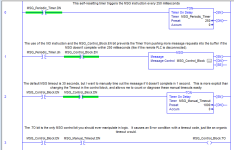Connected and cached refer more to how the connection between the message originator and target is handled, more so than how the message instruction is actually executed at the originator.
Ken's example is the correct way to execute a repeating or cyclical message instruction while also monitoring for instruction errors or timeout i.e. using a periodic execution timer and an execution timeout timer.
As I'm sure you've read somewhere in your research...
Connected Message...
1. When a connected message is executed the originator will send an unconnected message to the target to establish a connection.
2. Once connected, the originator sends the data to the target.
3. Once the target has acknowledged receipt of the data the originator sends another unconnected message to close the connection.
If the connection is uncached the above sequence is repeated each time the message instruction is executed.
Connected and Cached Message...
1. When a connected message is executed the originator will send an unconnected message to the target to establish a connection.
2. Once connected, the originator sends the data to the target.
3. Once the target has acknowledged receipt of the data the originator will move the connection to the cached table.
4. A cache timer is started. If the message is not executed again after this time, then the cache will automatically resend the data. This keeps the connection to the target open.
5. The connection will not drop off unless the controller goes to Program Mode, the target drops off the network, or another message requests the cache buffer. If so, the originator will send an unconnected message to close the connection.
6. The next execution of the message instruction will reestablish the cached connection.
Using an unconnected message, or an uncached connected message, will add some time to the overall transmission of the data, beyond the cyclical logic used to execute the message instruction. While it is usually negligible, using a connected and cached message is the most efficient way to handle the connection for cyclical messaging.
So you are just fine with those settings and if you use Ken's advice.
Regards,
George




